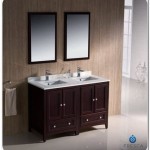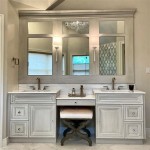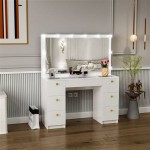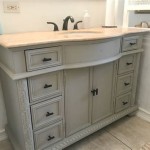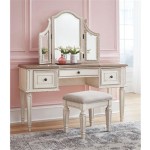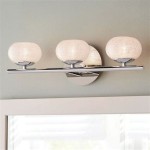Can You Paint A Vanity Top? A Comprehensive Guide
The bathroom vanity top, often subjected to moisture, daily use, and cosmetic spills, can quickly show its age. Replacing a vanity top can be a significant expense and undertaking. Therefore, painting it becomes an appealing alternative. However, the success of this project hinges on understanding the material of the existing vanity top, selecting the correct paints and primers, and meticulously preparing the surface.
This article aims to delve into the feasibility of painting different types of vanity tops, outlining the necessary steps, and addressing common challenges. It intends to provide a detailed, informative guide to help determine if painting a vanity top is the right solution and how to achieve a durable and aesthetically pleasing result.
Identifying Your Vanity Top Material
The first and perhaps most crucial step is accurately identifying the material of your existing vanity top. Different materials require different preparations and paint types to ensure proper adhesion and longevity. Common vanity top materials include laminate, ceramic tile, cultured marble, granite, and solid surface materials like Corian.
Laminate vanity tops are typically constructed from layers of plastic bonded to a core material, often particleboard or MDF. They are recognizable by their smooth, often textured surface that mimics the look of stone or wood. Ceramic tile vanity tops consist of individual tiles joined with grout. Cultured marble is a synthetic material made from crushed marble dust and resin, typically molded into a seamless shape. Granite is a natural stone characterized by its speckled appearance and inherent durability. Solid surface materials, such as Corian, are non-porous and uniform in composition, often featuring integrated sinks.
Accurate material identification dictates the subsequent steps, including surface preparation and product selection. Attempting to paint a surface without properly identifying it can lead to paint failure, peeling, or other undesirable results. If unsure, consult with a professional painter or contractor.
Preparing the Surface for Paint
Regardless of the vanity top material, thorough surface preparation is essential for a successful paint job. This process typically involves cleaning, sanding, and priming. The specific steps and products may vary depending on the material, but the underlying principles remain the same: to create a clean, slightly textured surface that allows the paint to adhere properly.
Begin by thoroughly cleaning the vanity top with a degreasing cleaner. Remove any soap scum, hard water stains, or other contaminants that can interfere with paint adhesion. Rinse the surface well with clean water and allow it to dry completely. Next, sand the surface to create a slight profile for the primer to grip. For laminate and cultured marble, use a medium-grit sandpaper (around 120-grit) to lightly scuff the surface. For ceramic tile, concentrate sanding on the grout lines to improve adhesion. For granite and solid surface materials, a slightly finer grit sandpaper (around 180-grit) may be sufficient. After sanding, remove all dust with a tack cloth or vacuum.
Once the surface is clean and sanded, apply a high-quality primer specifically designed for the vanity top material. For laminate and cultured marble, use an adhesion-promoting primer. For tile, use a primer designed for use on non-porous surfaces. For granite, and solid surface materials consult a paint professional for primer selection. Apply the primer evenly, following the manufacturer's instructions. Allow the primer to dry completely before proceeding to the next step. In some cases, two coats of primer may be necessary for optimal adhesion and coverage.
Selecting the Right Paint and Application Techniques
Choosing the right paint is as critical as surface preparation. Durability, moisture resistance, and aesthetic appeal are paramount considerations when selecting paint for a vanity top. Epoxy paints, polyurethane paints, and acrylic-urethane paints are all viable options, each with its own advantages and disadvantages. Epoxy paints offer exceptional durability and chemical resistance, making them well-suited for high-use areas. Polyurethane paints also provide excellent durability and a hard, glossy finish. Acrylic-urethane paints are water-based, making them easier to clean up and lower in VOCs, while still offering good durability and color retention.
Regardless of the paint type selected, it is crucial to choose a paint specifically formulated for interior use and suitable for the material of the vanity top. Read the product label carefully to ensure compatibility and follow the manufacturer's instructions for application. When applying the paint, use a high-quality brush, roller, or sprayer. A brush is suitable for detail work and smaller areas, while a roller is ideal for larger, flat surfaces. A sprayer can provide the smoothest, most even finish, but requires more skill and preparation.
Apply thin, even coats of paint, allowing each coat to dry completely before applying the next. Multiple thin coats are preferable to one thick coat, as they reduce the risk of drips, runs, and uneven coverage. Lightly sand between coats with a fine-grit sandpaper (around 220-grit) to smooth out any imperfections and improve adhesion. After the final coat, allow the vanity top to dry and cure completely before using it. The curing process can take several days or even weeks, depending on the paint type and environmental conditions.
Addressing Specific Material Challenges
While the general principles of painting vanity tops remain the same across different materials, each material presents unique challenges that require specific consideration. Laminate vanity tops, for example, can be difficult to paint due to their smooth, non-porous surface. Proper sanding and the use of an adhesion-promoting primer are crucial for ensuring that the paint adheres properly and does not peel or chip. It may require multiple coats of primer to get proper adhesion.
Ceramic tile vanity tops present the challenge of painting over grout lines. While paint can adhere to the tile surface, it may not adhere well to the grout, leading to cracking or flaking over time. To mitigate this issue, thoroughly clean and prime the grout lines before painting. Consider using a grout sealer after painting to protect the grout and prevent staining. Alternatively, explore epoxy grout paints which are designed specifically for restoring or changing the color of grout.
Cultured marble vanity tops, though generally smooth, can still present adhesion challenges. Thorough sanding and the use of a high-quality primer are essential. Pay particular attention to any areas that have been previously repaired or patched, as these areas may require additional preparation. Granite and solid surface materials like Corian are inherently durable and resistant to stains, but they can also be difficult to paint due to their non-porous nature. Consult with a paint professional or the manufacturer of the solid surface material for specific recommendations on primers and paints.
Protecting and Maintaining the Painted Vanity Top
Once the vanity top has been painted, protecting and maintaining the finish is crucial for ensuring its longevity. Apply a clear topcoat to protect the paint from scratches, stains, and moisture damage. Choose a topcoat that is compatible with the paint type and specifically formulated for use in bathrooms. Polyurethane topcoats offer excellent durability and water resistance.
Clean the vanity top regularly with a mild, non-abrasive cleaner. Avoid using harsh chemicals or abrasive scrubbers, as these can damage the paint finish. Wipe up spills promptly to prevent staining. Consider using a sealant for the sink area to prevent water from seeping through and damaging the painted surface.
Even with proper care, the painted vanity top may eventually show signs of wear and tear, such as scratches, chips, or fading. Touch-up paint can be used to repair minor damage. For more significant damage, it may be necessary to repaint the entire vanity top. Before repainting, thoroughly clean and sand the surface, and apply a fresh coat of primer.
Assessing the Cost-Effectiveness of Painting
Painting a vanity top can be a cost-effective alternative to replacement, but it is essential to consider all factors involved. The cost of the materials, including paint, primer, sandpaper, brushes, and rollers, must be weighed against the cost of a new vanity top. The time and effort required for surface preparation, painting, and cleanup should also be factored in. Painting requires patience and attention to detail to achieve a professional-looking result.
For simple vanity tops made of laminate or cultured marble, painting can be a relatively straightforward and inexpensive project. However, for more complex vanity tops, such as those with intricate tile designs or made of high-end materials like granite, the cost and effort of painting may not be justified. In such cases, replacement may be a more practical and cost-effective option. Furthermore, the long-term durability of a painted vanity top may not be comparable to that of a new vanity top, particularly in high-use bathrooms.
Before undertaking a painting project, carefully assess the condition of the existing vanity top. If the vanity top is severely damaged, cracked, or warped, painting may not be a viable solution. In such cases, replacement is likely the best option. Similarly, if the vanity top is of poor quality or design, painting may not significantly improve its aesthetic appeal. Consider whether the time, effort, and expense of painting are worth the potential improvement in appearance and durability. Ultimately, the decision of whether to paint or replace a vanity top depends on a variety of factors, including the material, condition, budget, and skill level of the homeowner.

Paint Bathroom Vanity Countertop Sink So Easy A Piece Of Rainbow

Paint Bathroom Vanity Countertop Sink So Easy A Piece Of Rainbow

Paint Bathroom Vanity Countertop Sink So Easy A Piece Of Rainbow
:strip_icc()/101922779-2cbc45e123c34827afb4f601723b03ca.jpg?strip=all)
How To Paint Bathroom Countertops

How To Paint A Bathroom Countertop Ace Hardware Youtube

How To Paint Old Bathroom Countertop Vanity Sink Easy Gorgeous Transformation Before After Youtube

How To Paint A Countertop Look Like Marble Average But Inspired

Diy Paint Peel Stick On A Small Bathroom Vanity Home Updates Budget
.jpg?strip=all)
Painting A Bathroom Vanity Again Dream Green Diy

Paint Bathroom Vanity Countertop Sink So Easy A Piece Of Rainbow
